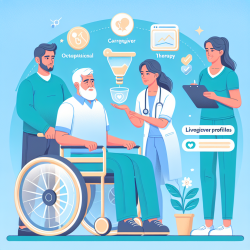Introduction
In the ever-evolving field of speech language pathology, staying ahead of the curve requires a commitment to understanding the latest research and its implications for practice. One such groundbreaking study, titled "SUPERGNOVA: local genetic correlation analysis reveals heterogeneous etiologic sharing of complex traits," offers valuable insights that could transform how practitioners approach therapy, particularly for children with autism spectrum disorder (ASD).
Understanding SUPERGNOVA
SUPERGNOVA is a novel statistical framework designed to estimate local genetic correlations using summary statistics from genome-wide association studies (GWAS). Unlike traditional methods that focus on global genetic correlations, SUPERGNOVA delves into the local genetic architecture, revealing nuanced genetic relationships between complex traits. This approach is particularly valuable in understanding the genetic overlap between ASD and cognitive performance, a relationship that has puzzled researchers due to its paradoxical nature.
Key Findings
The study highlights several significant findings:
- SUPERGNOVA outperforms existing methods in estimating local genetic correlations, providing statistically robust and efficient inference.
- Through the analysis of 30 complex traits, SUPERGNOVA identified 150 pairs of phenotypes with significant local genetic correlations, including the intriguing relationship between ASD and cognitive performance.
- The framework revealed that the positive genetic correlation between ASD and cognitive performance could be explained by two distinct genetic signatures with bidirectional local genetic correlations.
Implications for Practitioners
For speech language pathologists and other child therapy practitioners, these findings offer a new lens through which to view the genetic underpinnings of ASD and related cognitive traits. By understanding the local genetic correlations, practitioners can tailor their therapeutic approaches to better address the unique genetic profiles of their clients.
Here are some practical steps practitioners can take:
- Incorporate Genetic Insights: Use genetic information to inform therapy plans, particularly for children with ASD who may have distinct cognitive profiles.
- Collaborate with Geneticists: Work closely with geneticists to interpret genetic data and integrate it into therapeutic strategies.
- Stay Informed: Keep abreast of the latest research in genetic correlations to continuously refine therapeutic approaches.
Encouraging Further Research
While SUPERGNOVA provides a powerful tool for understanding genetic correlations, there is still much to explore. Practitioners are encouraged to engage with ongoing research and consider how these insights can be applied to improve outcomes for children with complex genetic profiles.
To read the original research paper, please follow this link: SUPERGNOVA: local genetic correlation analysis reveals heterogeneous etiologic sharing of complex traits.










